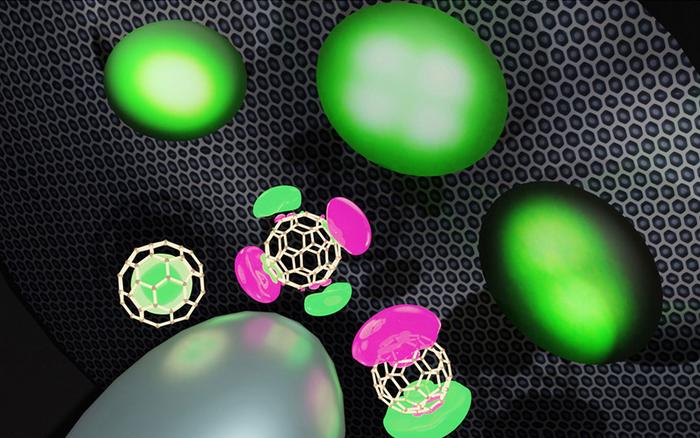Tsukuba, Japan—Research and development of organic electronics such as organic solar cells and organic light-emitting diodes is rapidly advancing. The “shape” of the electron orbitals of organic molecules (molecular orbitals) is crucial to the development of organic electronics; however, methods for visualizing molecular orbitals are extremely limited. Dynamic imaging of molecular orbitals in real space and real time has been particularly difficult yet is essential for studying structural changes and reactions of molecules.

Credit: University of Tsukuba
Tsukuba, Japan—Research and development of organic electronics such as organic solar cells and organic light-emitting diodes is rapidly advancing. The “shape” of the electron orbitals of organic molecules (molecular orbitals) is crucial to the development of organic electronics; however, methods for visualizing molecular orbitals are extremely limited. Dynamic imaging of molecular orbitals in real space and real time has been particularly difficult yet is essential for studying structural changes and reactions of molecules.
In this study, the researchers demonstrated that the particular molecular orbitals of single molecules can be imaged by projecting the electrons emitted from organic semiconductor molecules adsorbed on a needle tip. This imaging technique is called “field emission microscopy.” The field emission from a molecule and its spatial distribution were analyzed in detail, revealing that the visualized orbitals might spatially extend beyond the molecule. Such orbitals, called superatom molecular orbitals (SAMOs), are suitable for electron transport in organic electronics. These detailed measurements of SAMOs are the results of ongoing efforts by our research group. This achievement will not only facilitate future SAMO research but also promises a new dynamic method for imaging the diffusion and reactions of single molecules on surfaces.
###
This work was financially supported by JSPS KAKENHI Grant Numbers 22K18268, 20H02808 and 23K04516.
Original Paper
Title of original paper:
Field emission angular distribution from single molecules
Journal:
Carbon
DOI:
10.1016/j.carbon.2023.118215
Correspondence
Associate Professor YAMADA, Yoichi
Institute of Pure and Applied Science, University of Tsukuba
Related Link
Institute of Pure and Applied Sciences
Journal
Carbon
DOI
10.1016/j.carbon.2023.118215
Article Title
Field emission angular distribution from single molecules
Article Publication Date
13-Jun-2023




